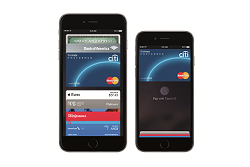The SIMAlliance has published a guide to near-field communication technologies for banks, retailers and service providers, in a bid to increase adoption of the tech.
The organisation has released a matrix weighing up the pros and cons of the four types of NFC technology: Host Card Emulation, SIM secure element, embedded secure element and hybrid models.
The report examines a range of different criteria including applications, market reach, security and technology. While HCE scores highly for market reach and developer accessibility, it scored poorly for security, an agnostic OS approach and a standardised ecosystem.
Perhaps unsurprisingly, SIMAlliance gives the best scores to a SIM-based secure element method of payment, with it only hitting an average score for developer accessibility, low levels of security and a global scale.
SIMalliance Chairman Hervé Pierre said: “With the increased technology choices that service providers now face when bringing their NFC services and applications to market, some may welcome support when navigating their options.
“Over the past year, different providers have opted for different technology approaches, illustrating that this is not a black or white decision; yet the choice of deployment technology and model is crucial. It has the potential to significantly impact service viability, user experience, customer reach, security and service roadmap, both now and in the future.
“It is SIMalliance’s view that different NFC technologies complement each other by bringing different qualities to the ecosystem and further convergence is likely, leading to many future types of hybrid models, which have not yet been defined.”
According to a recent report, mobile payments will account for $130 billion (€105 billion) of consumer retail spending by 2020. Researchers Strategy Analytics said the spending would be made up of more than a quarter of a billion users making five NFC payments per month.
Read more:



